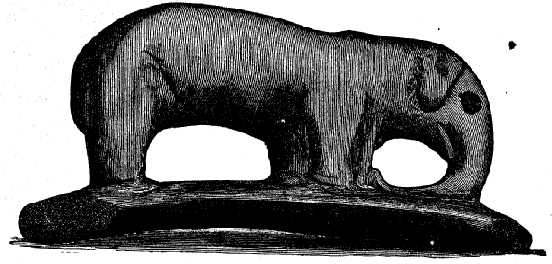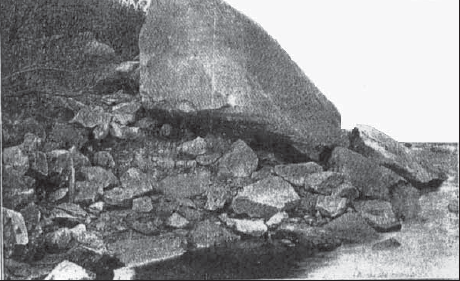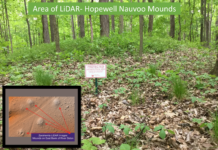Problems with the Land Bridge Theory
I want to mention that as you read this blog or any information I share, I am hopeful that it will help you develop the desire to study and research and pray on your own. The purpose of life is to learn and gain knowledge of truth. One mans truth is another mans speculation. I am thankful everyday to learn new things about the Lord and His world of creation.
Many Historian and Archaeologists date many bones and artifacts based on time frames that are different than what seem to be reasonable today. Especially after reading the hard work of Dean Sessions and his book found at UniversalModel.com. Instead of coming over the land bridge as is very popular with scientists who have no better theory, we believe it very likely that the Jaredites brought the appropriate mammoths, cureloms, elephants or cumoms along with bees and other animals on the eight barges. In that token, Lehi may have brought similar baby mastodons or elephants from the Old World. The old story that almost everything came over the Bering Strait just doesn’t seem to be an option any more.
The more we learn about the Gospel and research about the Jaredites and Nephites, the more we understand the Lord is in control of “all things” and bringing the proper animals to the New World seems a very likely answer. We know Lehi must have brought the sheep, oxen, doves, goats, wheat, barley, and grapes to the United States to practice the Law of Moses. It is also another sign of the United States being the Land described in the Book of Mormon, as the previously listed animals, plants and fruits that were essential to practice the Law of Moses are no where to be found in Mesoamerica during the time of the Nephites. Every one of these necessary plants and animals are found in the United States during Nephite times.

Do we hear of Dinosaurs in the Bible?
“Many have collected dinosaur remains all over and they have no lingering doubt concerning their reality. Thousands of specimens have been found and excavated. However, simply because we acknowledge the existence of dinosaurs does not mean we must accept that it took millions of years for their appearance/disappearance. Many people see the dinosaur bones, but feel there is no direct Biblical supporting evidence for their creation. I think the existence of dinosaurs is very plausible and even supported in the Bible. The word “Dinosaur” does not even appear in the KJV of the Bible and that makes perfect sense. Because In 1842, the English naturalist Sir Richard Owen coined the term Dinosauria, derived from the Greek deinos, meaning “fearfully great,” and sauros, meaning “lizard.”
“Gen 1:24-25 “And God said, Let the earth bring forth the living creature after his kind, cattle, and creeping thing, and beast of the earth after his kind: and it was so. And God made the beast of the earth after his kind, and cattle after their kind, and every thing that creepeth upon the earth after his kind: and God saw that it was good.”
Among the beasts of the Earth, there were animals of all sizes, great and small, including those we know today as dinosaurs. We know they were here because we see their remains, but where did they go? Intermittent extinction of animals is ongoing, but the greatest mass-extinction event to occur on the Earth, the global, Universal Flood, witnessed the sudden end of 75% of all land species, including plants and animals, and 95% of all marine species. When this transpired about 4,400 years ago, tens, even hundreds-of-millions of animals perished, most obliterated by the forces of the great Deluge, but some remains survived because of a very unique, perfectly balanced environment of heat, pressure, water, and ocean chemistry, known as a hypretherm. Those fossil remains show us that the continents were all once connected, that all dinosaurs died in a flood environment (worldwide, all dinosaur fossils are found in flood sediment), and that the extinction event happened in the springtime. In fact, fossilization of dead animals is not happening today; it only happened during the Great Flood.” Russ Barlow, Editor of the Universal Model, New Millennial Science.
See my blog titled, Dinosaurs in the Manti Temple
Subscribe to our 3rd Virtual Conference.
Begin Watching April 9th, 2021 on our website here: bookofmormonevidencestreaming.com

Pennsylvania’s Elephant Petroglyph on the Allegheny River

Written by Tom Anderton. Originally published in Ancient American magazine issue #83.
A rock shelter near Van, Pennsylvania known as “Rainbow Rock” features the carvings of snakes, a human figure, apparent bird tracks and dots, as described by The Pennsylvania Archaeologist (Vol. 42, No. 3, September 1972). While these images are common visual components of petroglyphs found across North America, the elephant depicted inside a rectangle on the face of a large stone standing near “Rainbow Rock” is not.
James L. Swauger, an expert in prehistoric rock art with more than seventy published reports dealing primarily with petroglyphs in the Ohio Valley, examined the elephant portrayal. “It is obvious at this time that the figure was carved recently by persons using metal tools, and that it has no relationship to the undoubted American Indian petroglyphs of the site,” he concluded in “The Bunola Head, A Forgery”, for The Pennsylvania Archeologist, Vol. 30, No. 2, Gettysburg. “Leo T. Sarnaki Carnegie Museum Photographer, concurred in this opinion, as did the half dozen others with whom I visited this site.”
While Swauger and company are correct in pointing out that pre-Columbian Indians used stone tools, their assumption that the Rainbow Rock pachyderm must be, ipso facto, a modern fake, because it was carved with a metal utensil, is only an assumption. Large numbers of ancient arrowheads, spear-points and related items of hardened copper have been found especially in Upper Michigan since the early 19th Century. They comprise a great body of physical evidence on behalf of metal tools used by the prehistoric residents of our continent. Of course, Swauger was far more disturbed by the representation of an elephant, a creature mainstream academics such as himself insist was totally unknown to the pre-modern inhabitants of North America.
But the Pennsylvania petroglyph is hardly the only such image found in the state. In 1872, a farm boy working his fields near Doylestown, Pennsylvania, accidentally plowed up a five-inch-long stone covered with strange symbols on one side. On the other was “a scene which could only be interpreted as a pictographic account of an Indian encounter with a mammoth” as described in a 1972 NEARA Newsletter article (7:16-18) by Richard L. Greene. The Lenape Stone, named “after a local branch of the Delaware Indians,” was investigated and deemed authentic by Buck County Historical Society spokesman, Henry C. Mercer.
At least half a dozen Wisconsin effigy mounds shaped into the unmistakable configuration of elephants were personally studied and documented during the late 1800s by the professional surveyor, T.S. Lewis, whose life’s work is preserved on microfilm at the Minnesota Historical Society Museum, in Saint Paul.
In their hasty dismissal of the Rainbow Rock elephant petroglyph as “a forgery”, conventional archaeologists may have yet again condemned a possibly valuable insight into North American prehistory. The price of such high-handed neglect is often destruction, a case in point being northwest Pennsylvania’s so-called “Indian God Rock”
Found in Venango County, some eight miles form the city of Franklin, a flat sandstone surface twenty-two feet high and fourteen feet wide is positioned at a fifty-degree angle to the east bank of the Allegheny River, not far from its confluence with French Creek. The site was covered with profuse rock art when first described by the French explorer, Blenville De Celoron, in 1749. Although he did not copy the inscriptions, they were still in tact more than one hundred years later, as confirmed by the famous antiquarian, Henry Schoolcraft, in his 1853 publication, Indian Antiquities.
Since then, however, “Indian God Rock” has been severely vandalized, so much so its ancient petroglyphs have been almost entirely effaced. Perhaps, like “Rainbow Rock”, with its offensively anomalous elephant image, it was neglected by mainstream scholars, who thereby consigned more of our country’s prehistory to oblivion.Category: Allegheny River, elephant petroglyph, French Creek, God Rock Petroglyph, Indian God Rock, Lenape Stone, Pennsylvania, Rainbow Rock / Tags: Elephant petroglyph, Indian God Rock, Rainbow Rock










